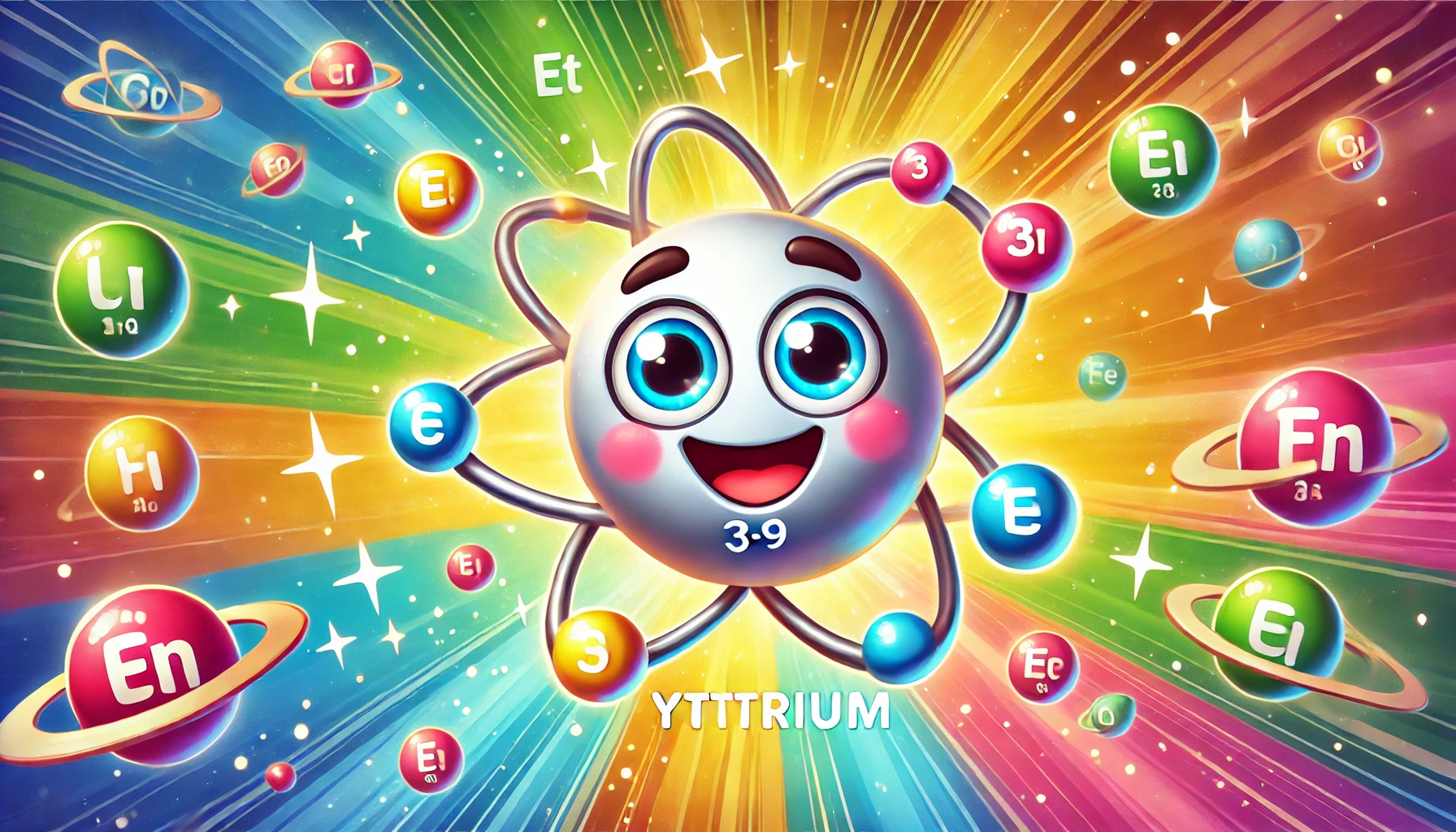Understanding Yttrium: Properties, Uses Health Risks, and Fascinating Facts
Understanding Yttrium: Properties, Uses Health Risks, and Fascinating Facts
Table of Contents
- Introduction to Yttrium
- Properties of Yttrium
- Uses of Yttrium
- Health Risks of Yttrium Exposure
- Interesting Facts about Yttrium
- Environmental Impact of Yttrium
- Conclusion
- References
Understanding Yttrium: Properties, Uses, Health Risks, and Fascinating Facts
Introduction to Yttrium Yttrium is a chemical element with the symbol Y and atomic number 39. It is a transition metal known for its versatility and various applications in technology and industry. This article explores the properties, uses, health risks, and interesting facts associated with yttrium, providing a comprehensive understanding of this valuable element.
Properties of Yttrium Yttrium is characterized by several distinct physical and chemical properties.
Physical Properties
- Appearance: Yttrium is a silvery-metallic element that is relatively stable in air.
- Density: The density of yttrium is 4.472 g/cm³.
- Melting Point: Yttrium melts at 1,522°C (2,772°F).
- Boiling Point: The boiling point of yttrium is 3,345°C (6,053°F).
Chemical Properties
- Reactivity: Yttrium reacts slowly with water and rapidly with mineral acids. It forms a protective oxide layer in the air, preventing further oxidation.
- Compounds: Yttrium forms various compounds, such as yttrium oxide (Y₂O₃), which is highly stable and commonly used in materials science.
Uses of Yttrium Yttrium has numerous applications across different industries due to its unique properties.
Electronics and Optics
- Phosphors: Yttrium is used in phosphors for color television tubes and LED lights, providing red color.
- Lasers: Yttrium is used in yttrium aluminum garnet (YAG) lasers, which have applications in industrial cutting, medical procedures, and military targeting systems.
Ceramics and Glass
- Yttria-Stabilized Zirconia: Yttrium oxide is used to stabilize zirconia in ceramics, which are used in dental implants, fuel cells, and high-temperature superconductors.
- Optical Glass: Yttrium is used in the production of high-performance optical glass for camera lenses and other optical instruments.
Metallurgy
- Alloying Agent: Yttrium is used to improve the properties of alloys, including aluminum and magnesium alloys, enhancing their strength and workability.
Medical Applications
- Radiotherapy: Yttrium-90, a radioactive isotope, is used in targeted radiotherapy for treating cancer, particularly liver cancer.
- Medical Imaging: Yttrium is used in certain contrast agents for magnetic resonance imaging (MRI).
Health Risks of Yttrium Exposure While yttrium is generally considered to have low toxicity, there are some health risks associated with exposure to yttrium compounds and dust.
Inhalation and Ingestion
- Respiratory Irritation: Inhalation of yttrium dust can cause respiratory irritation, coughing, and shortness of breath.
- Gastrointestinal Issues: Ingestion of yttrium compounds can cause gastrointestinal irritation, including nausea and vomiting.
Skin and Eye Contact
- Skin Irritation: Direct contact with yttrium compounds can cause skin irritation and dermatitis.
- Eye Irritation: Exposure to yttrium dust or solutions can cause eye irritation and potential damage.
Interesting Facts about Yttrium Yttrium has several fascinating aspects that make it an intriguing element.
Discovery
- Discovered in 1794: Yttrium was discovered by Finnish chemist Johan Gadolin in 1794 in a mineral sample from Ytterby, Sweden, which is where its name originates.
Isotopes
- Stable Isotope: The most stable isotope of yttrium is yttrium-89, which is naturally occurring and non-radioactive.
- Yttrium-90: A significant radioactive isotope used in medical treatments.
Space Applications
- Meteorites: Yttrium is found in some meteorites, providing insights into the composition of celestial bodies.
Environmental Impact of Yttrium Yttrium is not known to have significant environmental impacts, but its extraction and use should still be managed responsibly.
Natural Occurrence
- Abundance: Yttrium is relatively abundant in the Earth’s crust, often found in rare earth minerals such as xenotime and monazite.
- Mining: Extraction of yttrium from these minerals must be done with care to avoid environmental damage.
Industrial Waste
- Waste Management: Proper disposal of yttrium-containing industrial waste is crucial to prevent environmental contamination.
Conclusion Understanding yttrium, its properties, uses, health risks, and interesting facts provides valuable insight into this versatile element. While yttrium is generally safe with low toxicity, appropriate safety measures should be taken when handling yttrium compounds and dust. Its applications in electronics, optics, metallurgy, and medicine highlight its importance in modern technology and industry.

<ⓒ WizardMedics (wizardmedics.com)>


